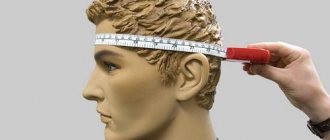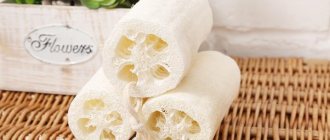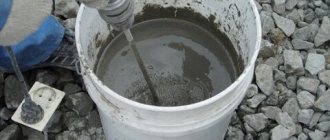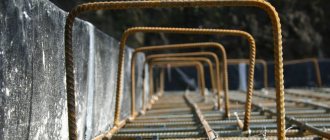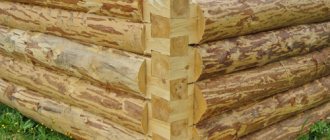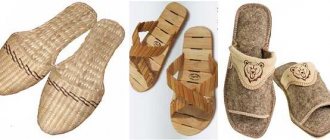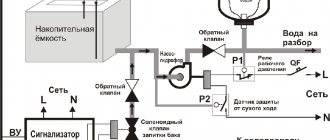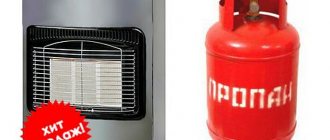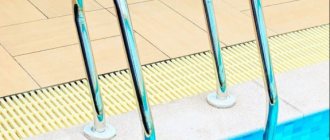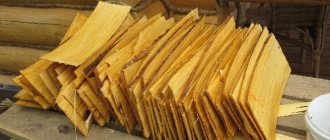Needlework
07/24/2018 Anastasia Prozheva
A hat is a very important item of clothing, because your head should always be warm. Today there is a huge selection of hats in stores: knitted, sewn from fabric, but there are very few felted wool hats, most likely practically none, but they look very stylish and are a very warm headdress. What to do in such a situation when you want a felted wool hat, but you can’t find it anywhere? The answer is simple - felt it yourself. Felting wool hats is not the easiest process, but our article will help you in this difficult task.
Features of bath hats
The purpose of a bath cap is to protect the head from high temperatures in the steam room. It provides an excellent opportunity to stay in the steam room for a longer time without the risk of heatstroke and, as a result, headache, nausea, and dizziness.
Specialized bath accessories stores provide discerning customers with a huge selection of bath hats. You can spend hours looking at the assortment of finished products that can diversify our life and make a visit to the bathhouse a bright festive event.
The choice of hat depends on your personality. There are simple classic models that have become traditional, such as the bell, budenovka, and papakha. Models for the brave and cheerful - kokoshnik, jester's cap, cocked hat, pirate hat.
Expensive designer models are decorated with embroidery, appliqués, decorative ribbons, and cords. When purchasing such unusual, original bath caps, keep in mind that the paint on them must be durable, the parts must be firmly attached to withstand the test of hot steam and high temperature.
The shape of the bath cap must correspond to its main purpose - to serve as reliable protection for the head, and be sure to cover the crown, back of the head, eyes and hair. It is better to tuck long hair under a hat, this will protect it from drying out.
Purpose
The physical features of air convection in the steam room of a bathhouse are such that the temperature gradation is distributed from bottom to top, and the difference in indicators can be very significant. For example, in the floor area, at the level of the ankles, it can be about 40 degrees Celsius, at the level of the belt - 65, chest - 80, and under the ceiling, in the area of the top of the head of the soaring person, all 100 -110.
Thus, the human body is simultaneously in different temperature zones or zones, and the most sensitive part of our body, the back of the head and the crown of the head, are subject to a powerful and severe temperature attack. Which exit? Reducing the temperature of the upper zone of the steam room is not an option, since this will lead to inevitable cooling of the lower zones, especially at floor level.
The old bath tradition has found a simple and effective solution - using a bath cap. Why is it needed, it seems that it’s already hot there, without unnecessary elements of equipment. In Central Asia and the Middle East, from time immemorial, the most effective means of combating heat were: hot tea, a headdress made of natural cotton, a cotton robe with a warm belt scarf. The complete set of the gentleman there.
Natural materials such as cotton and wool have excellent isothermal properties; they maintain internal temperature, standing up as an impenetrable barrier to high temperatures outside.
This is exactly the mechanism of action that bath caps have. They maintain a lower temperature around the most sensitive places of the human body, the area of the back of the head and the crown of the head, relative to the ultra-high temperatures of the upper zone of the steam room and ensure a safe and relatively comfortable stay there for quite a long time. If a bath cap is not used, then there are all the prerequisites for heat stroke with all its negative and harmful consequences.
Requirements for a bath cap
A bath hat is a significant element, coming in second place in the list of bath sets. Before you buy it, familiarize yourself with the requirements that bath culture places on a modern hat:
- Safety
. It should serve to preserve health. Use natural materials for it; they are preferable to synthetic ones, which can release toxic substances when heated. - Protection
. It should protect against burns and overheating in the Finnish bath and Russian steam room, prevent the development of bacteria and fungus on the scalp, prevent the appearance of dandruff and seborrhea, and hair brittleness. To do this, the material from which it is made should not create a “greenhouse effect”, but maintain a comfortable temperature. - Practicality
. The hat should not shrink or fade, but should wash well and dry quickly. - Convenience
. The hat should be comfortable, not tight, but not too spacious, it corresponds to the size of the head. - Attractiveness
. Your positive emotions from hygiene procedures will only increase if the design of the bath cap brings pleasure to you and your friends.
Heatstroke - briefly about the terrible things
As mentioned above, a hat in the bathhouse is used to prevent heat stroke.
In the Russian tradition there is a well-known saying: “until thunder strikes, a man cannot cross himself.” Many extremely self-confident people neglect the rational solution to the question “why is there a hat in the bathhouse” and rely entirely on the power of their body and the cardiovascular system, in particular. It’s certainly worth pointing out the main signs of heat stroke and immediate measures to overcome its consequences.
Let's start by describing heat stroke as a physiological phenomenon. Heatstroke is a functional disorder of the body caused by overheating. Main features:
- Redness of the skin of the body, the skin is dry to the touch and feverish;
- Rapid breathing, shortness of breath;
- Rapid, weak pulse;
- Dizziness, nausea, vomiting, darkening of the eyes, visual hallucinations;
- Muscle weakness, cramps.
Heat stroke is a dangerous and insidious phenomenon, especially in relation to children, the elderly, those with weakened immunity and diseases of the cardiovascular system, therefore, at the slightest suspicion of symptoms of heat stroke, it is necessary:
- Organize general cooling of the body and an influx of fresh, oxygen-rich air.
- Ensure that the victim is in a supine position, naturally, in the absence of vomiting.
- Call a doctor.
- To clear consciousness, periodically inhale vapors of ammonia.
Material for sewing bathhouse hats
The material for a bathhouse hat is no less important than its shape.
We can say that any one is suitable, but preferably natural. Synthetics will not save your head from overheating; it will create uncomfortable conditions due to poor hygroscopicity and high thermal conductivity. Animal wool is a natural material with high hygroscopicity and low thermal conductivity. Wool absorbs moisture up to 1/3 of its volume. Thanks to good thermal insulation, the head in a woolen hat maintains a constant temperature, lower than the environment.
In ancient times, wool was attributed with medicinal properties; it was used to treat radiculitis and arthrosis, and gave massage to improve blood circulation. Therefore, instead of a traditional bath hat, you can take at least an old knitted hat for the street, but felted woolen material - felt or felt - is much better.
The most popular natural ecological fabrics for sewing hats are:
- Felt
. Non-woven material with high density, its thickness reaches several millimeters. Felt is produced manually from wool fibers using the felting method. The thickness of the felt pieces can vary depending on its purpose. Sheep wool is traditionally used as a raw material. Under the influence of hot steam and water, the cuticles of the hairs adhere tightly to each other, resulting in the formation of a dense, light mass. - Felt
. This is “refined” felt. Its production requires finer wool from goats, rabbits, and merino wool. The technology for felting felt and felt is almost the same. This is one of the most ancient technologies that appeared long before the development of weaving. Sometimes synthetic fibers are added to felt. Types of felt: smooth (velor), fleecy. Thanks to the soft wool, the felt does not prick, which sometimes happens with coarser felt. - Linen
. Natural material of plant origin. It has a beneficial effect on the scalp because... The phenolic compounds it contains destroy bacteria and fungus. A linen hat will well protect your scalp from drying out and your head from overheating at the highest temperatures. Finnish linen sauna hats are very comfortable, original and varied in design. - Cotton
. Hygienic material, used for making hats along with linen. Cotton bathhouse caps are valued for their qualities: hygroscopicity, anti-allergenicity, which is important if you are allergic to wool. Since a thin hat is not suitable for a steam room, choose terry fabrics for it. In the absence of a special bath cap, you can wrap your head with a terry towel.
What is better - felting or sewing?
There is no big difference between a hat made from ready-made material and a product that was created from scratch. When felting a hat, that is, creating the fabric itself, there is a certain freedom in choosing wool of different colors. For example, by weaving wool of other colors during the felting process, you can create an original and bright hat. In addition, a hat you felt yourself will be a source of special pride. However, a high-quality hat made from ready-made material and decorated can bring no less joy to the owner and his steam room comrades.
Making a budenovka hat for a bath
There are several ways to get the desired bath accessory: buy in a retail chain, order from a workshop, or make it yourself. Having mastered the process of sewing a bathhouse hat, you can make a valuable gift to yourself or friends. Now let’s find out how to sew a bathhouse hat and spend just an hour of your time on it. Purchase material, tools, and a pattern that is suitable for your model, be patient, and use your imagination. Even women and men who are not very experienced in tailoring can sew a budenovka.
Constructing a pattern for a budenovka hat for the bathhouse
“Budenovka” is a practical, comfortable hat that does not require special modeling skills. Sewing even something as simple in a tailor’s sense as a bath cap begins with constructing a pattern in the following sequence:
- Measure the circumference of your head using a centimeter along the forehead and crown of the head. The depth of the cap is measured from the ear to the crown.
- Divide the resulting number by six. So many wedges will need to be duplicated.
- Draw on paper the outline of one wedge in the form of an elongated isosceles triangle. To make the hat fit better, round the ribs. Copy wedge: 4 pcs. for the front and back and 2 sides. It’s easier to make a bath hat pattern on graph paper or using a pattern. You will need it more than once; stick it on cardboard for safekeeping.
- Draw the remaining details of the hat on paper: visor (2 pcs.), loop (2 pcs.), lapel (2 pcs.).
- Cut out the pattern pieces with scissors and transfer them to the fabric.
Thin material (linen, cotton) can be folded in half to increase thickness. Natural fabrics will shrink up to 30% in the humid air of a steam room, so add seam allowances of 10-15 mm and height allowances of more than 1 cm to the desired depth.
Sewing a budenovka hat for a bath
Before you start sewing a bath hat, you need to make sure you have simple sewing supplies, such as a centimeter, ruler, pencil, pattern paper, scissors, thread (cotton, wool), needle, thimble, awl or thick needle, material (felt , felt, linen, cotton).
You can sew the prepared parts of the budenovka hat for the bath using a sewing machine or by hand. The choice of sewing method depends on the thickness of the fabric. Sew thin fabric pieces using a sewing machine. It is better to compact them by folding them in half.
Thick felt is difficult to sew on a machine without ruining it, so hand sewing is preferable, which can be made decorative. Also sew the felt by hand with a thick needle, first piercing the holes with an awl. Join parts made of thick material end-to-end and sew with strong wool thread. To decorate and sew felt and felt, you can use a thread of a contrasting color and sew along the front side.
The handmade “Budenovka” hat for the bathhouse is ready. If you wish, it can be decorated with various details. Please note that the air in the steam room is hot; do not use metal or other hot fittings to avoid burns. Sew a loop on the top of the head so that it is convenient to hang the hat on a nail in the bathhouse.
Felting a woolen bath hat
You can not only sew, but also felt a bath hat yourself. There are dry and wet felting. Dry felting requires skill, experience and the presence of a special tool - a felting needle; felting a hat using the wet method is easier for a beginner.
Types of wool for felting hats in the bathhouse
A wool sweater washed in hot water becomes dense, stiff, and reduced in size.
In a word, he “felt.” This is the basis for the technique of wet felting a bath hat in a warm soapy solution. To make hats for the bath, different wool is used, differing in thickness, fiber length and production method:
- Oches
. Wool with short hairs. Felt is made from it. - Sliver
. Combed wool, without hard hairs, undyed. It is cheaper than dyed yarn. Very good for felting undyed bath hats. - Dyed combed wool
. Its fibers are smooth, unidirectional, elongated. The most common material for making colored bath caps. - Carding
. The wool fibers are tangled, directed in different directions, and it is very easy to felt wet or dry. A popular material, also called “wool wool”, is used to make not too thin felt hats for the bathhouse. - Combed wool from fine-wool sheep (merinos)
. The most expensive, high-quality wool, which is used to make delicate things. Soft and silky felt is suitable for felting model and designer bath caps.
Materials and tools for felting a bath cap
Felting a bath hat does not require any special tools; you can make do with the tools you have at home.
With the exception of sheep wool for felting - you need to buy it at a craft store or order it from an online store. To felt a hat, prepare the following materials and tools:
- Felting wool (not spun wool of the same or different colors);
- Dense material for the form, for example, linoleum or thick cellophane;
- Laundry bag (plastic wrap with bubble wrap or any mesh material will do);
- Hot soap solution in a proportion of 1 part water and 4 parts liquid soap;
- Sprayer or atomizer;
- Hat blank (flower pot, three-liter jar).
Wet felting a bath hat
If you decide to make a completely original unique model, then learn the technique of felting hats according to the proposed instructions.
It will take time and dexterity, but the result will please you and make you proud of yourself. Let's look at the stages of wet felting a bath hat with your own hands:
- Take measurements of your future hat. Make a pattern from thick material. You can use a knitted hat of a suitable size. Trace it on the linoleum with a pencil. Remember to increase the outline size by 30% for shrinkage.
- Separate thin fibers from a skein of wool and lay them on the pattern in different directions, overlapping, for better adhesion. Go beyond the edges of the template, the extra pieces of felt will then turn up. Make sure there are no holes, lay thin strands in several layers, as if massaging, press with your fingers. The packing density should be uniform over the entire area of the pattern.
- Examine the fabric through the light and cover any possible bald spots. Apply pieces of wool in other directions to strengthen the felt. Repeat this step several times until you get the desired thickness.
- Carefully place the hat pieces into a washing bag and spray generously with hot soapy water from a spray bottle. If you don’t have such a bag, wet the product and simply cover it with a film, bubbles down, or a mesh.
- Pat the part with your palms for several minutes, gradually increasing the pressure until a rich foam forms. You can roll the workpiece using a gurney or a children's machine.
- Remove the film, turn the shape over with the wool down, fold the excess edges onto the pattern, and press well.
- Place another layer of wool on top of the pattern and repeat the felting process as in steps 4-6.
- Using a dry cloth, thoroughly blot the entire workpiece on both sides. Cut the bottom of the hat with scissors and remove the pattern.
- Lather the workpiece well with your hands, inside and out, remembering like dough, until the head thickens and stops falling apart.
- Place the wet product on the prepared blank and, smoothing it with your palms, give it shape. Leave to dry.
- In cool water, rinse the hat from the soap, alternating hot and cold water, squeeze it lightly without twisting it, and return it to the blank. Shape, leave to dry completely away from heating.
- Cut the dried hat to form a helmet, decorate it with decorative elements that can be cut from pieces of colored felted wool. Make the ribbon for decoration thinner than the hat itself, and iron it well before cutting.
How to felt a hat - watch the video: When visiting a sauna or bathhouse, do not forget to take with you your favorite bath accessory - a hat. It doesn’t matter whether it’s a purchased copy or an exclusive one made with your own hands. The main thing is to enjoy the steam room and stay healthy.
